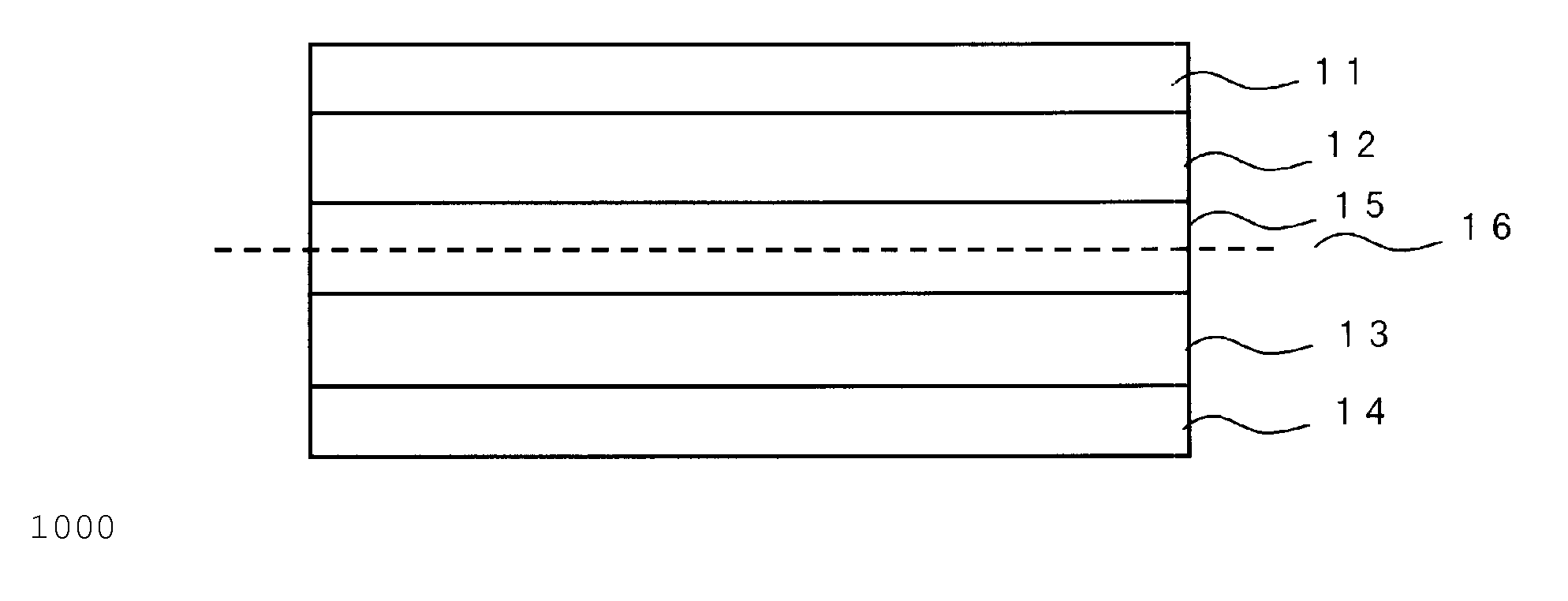Secondary battery using an electrolyte solution
a second battery and electrolyte technology, applied in the field of second battery using an electrolyte solution, can solve the problems of inability to control the surface film inability to achieve stable film formation on both the anode and the cathode, and inability to achieve stable film formation over a long period of time. , to achieve the effect of excellent lithium, excellent charge/discharge efficiency, and good cycle characteristics
- Summary
- Abstract
- Description
- Claims
- Application Information
AI Technical Summary
Benefits of technology
Problems solved by technology
Method used
Image
Examples
examples
Fabrication of Battery
[0076]Cathode active material given in Tables 1 to 5 and a conductivity imparting agent were subjected to dry-type mixing, and uniformly dispersed in N-methyl-2-pyrrolidone (NMP) in which PVDF serving as a binder has been dissolved to prepare a slurry. Carbon black was used as a conductivity imparting agent. The slurry was applied on an aluminum metal foil (20 pm in the case of a cylinder type and 25 pm in the case of a laminated type) serving as cathode current collector and NMP was evaporated to form a cathode sheet. The solid content ratio in the cathode was cathode active material:conductivity imparting agent:PVDF=80:10:10 (weight %).
[0077]On the other hand, when an anode active material consists of a carbon material, carbon and PVDF are mixed so that carbon:PVDF=90:10 (weight %), dispersed in NMP and applied on a copper foil (10 pm in the case of a coin type and cylinder type and 20 pm in the case of a laminated type) serving as anode current collector 14....
PUM
| Property | Measurement | Unit |
|---|---|---|
| LUMO | aaaaa | aaaaa |
| weight % | aaaaa | aaaaa |
| thickness | aaaaa | aaaaa |
Abstract
Description
Claims
Application Information
 Login to View More
Login to View More - R&D
- Intellectual Property
- Life Sciences
- Materials
- Tech Scout
- Unparalleled Data Quality
- Higher Quality Content
- 60% Fewer Hallucinations
Browse by: Latest US Patents, China's latest patents, Technical Efficacy Thesaurus, Application Domain, Technology Topic, Popular Technical Reports.
© 2025 PatSnap. All rights reserved.Legal|Privacy policy|Modern Slavery Act Transparency Statement|Sitemap|About US| Contact US: help@patsnap.com



